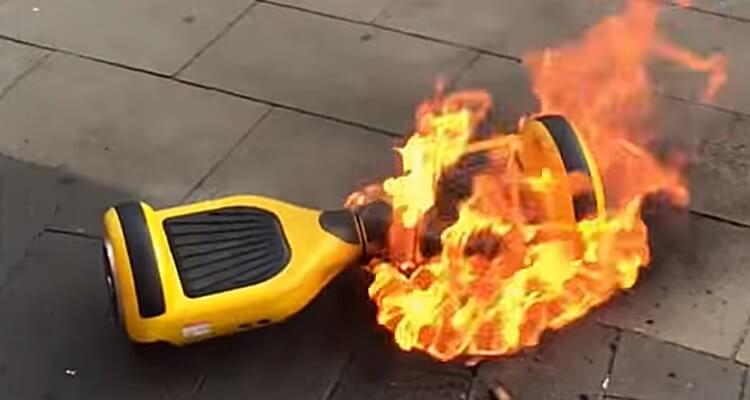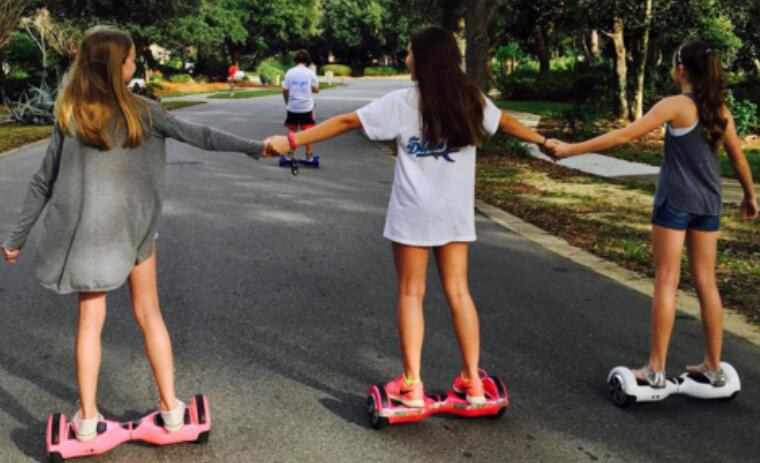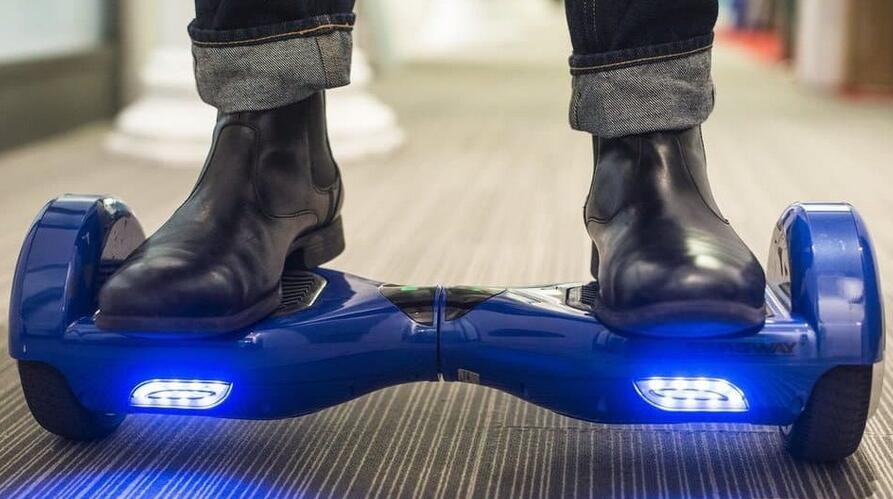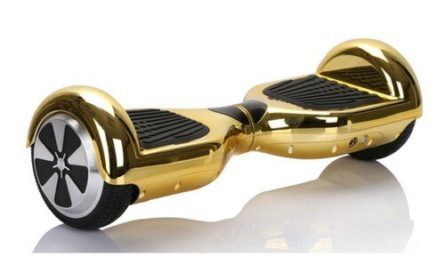Hoverboards, also known as self-balancing scooters, exploded in popularity around 2015 as one of the hottest new gadgets and modes of transportation. But shortly after the craze began, safety concerns started mounting about potential fire hazards and rider injuries. So are hoverboards actually safe to ride?
In this comprehensive guide, we’ll dive into all the health and safety issues surrounding hoverboards to help you determine if they are safe for your kids. We’ll provide tips for buying a safer option, using proper precautions, learning the legalities around hoverboard use, and more.
Table of Contents
Hoverboard Safety Concerns
While hoverboards can be fun and convenient for quick trips, several safety risks need to be considered before stepping on one of these futuristic-looking gadgets.
1. Fire Hazards
One of the biggest concerns with hoverboards has been the risk of the lithium-ion batteries overheating and catching fire. In 2016, the Consumer Product Safety Commission (CPSC) investigated over 60 fires related to hoverboards resulting in over $2 million in property damage.
Several factors can contribute to hoverboards catching fire:
- Cheap electrical components – Poor quality boards may use inferior electrical parts more prone to short-circuiting and exploding batteries.
- Faulty lithium-ion batteries – There have been recalls on certain lithium-ion batteries used in hoverboards that are more susceptible to issues.
- Overcharging – Leaving a hoverboard plugged in too long after it’s fully charged can lead to battery failure.
- Knockoff brands – Counterfeit hoverboards that bypass safety testing pose a huge fire risk. Purchasing from a reputable brand is important.
- Damage – If a hoverboard battery is cracked or damaged, it’s more likely to have an electrical issue and combust.
2. Electrical Safety
In addition to potential fires, some hoverboards have been known to shock users due to electrical malfunctions. This can especially be an issue with lower-quality boards where water can more easily seep into the electrical components.
3. Fall and Collision Hazards
Riding a self-balancing device on two wheels at up to 10 mph also inherently comes with physical risks, especially for those inexperienced with hoverboards. Potential injuries include:
- Falls from loss of balance or hitting an object
- Collisions with pedestrians, cars, or other obstacles
- Falls from aggressively steering or braking
- Injuries from learning to use the hoverboard
Wrist fractures, head injuries, and bruises/cuts are common ER visits for hoverboard riders. Children are at especially high risk for accidents. Proper safety gear and supervision are a must.
4. Lack of Regulation and Oversight
One issue that increased the risks of hoverboards was the overall lack of oversight and regulation during their initial rise in popularity. No safety certification was required and many sub-standard models entered the market, leading to more fires and injuries.
Now, the CPSC has implemented more requirements including warning labels, battery testing, and liability insurance. Reputable brands have also begun meeting stricter voluntary safety standards to help give consumers peace of mind.
5. Knockoffs and Counterfeits
Part of the lack of regulation also led to a flood of cheap knockoffs and counterfeit hoverboards being produced, mainly coming out of China. These boards completely bypassed any safety testing and compliance, making their batteries and electrical systems much more prone to issues.
Remember only purchase hoverboards from reputable brands through authorized retailers. If the price seems too good to be true, it’s better to avoid it.
Are Hoverboards Safe for Kids?
Children are especially at high risk for accidents and injuries when using hoverboards due to their inexperience, developmental stage, and lower body weight.
So is there an appropriate age for kids to start using hoverboards?
Most manufacturers state the minimum recommended age is 13, but some say ages 8+. Use discretion based on physical ability, coordination, and maturity level. Strict adult supervision is a must for younger kids.
How to Use Your Hoverboard Safely?
Once you have a hoverboard that meets key electrical and fire safety standards, you also need to take precautions in how you use and maintain it.
Rider Safety Gear
The first step is to make sure you have proper safety gear, especially if new to hoverboards:
- Helmet – Select a helmet that meets CPSC standards to protect your head in a fall.
- Knee and elbow pads – Falling is common for beginners. Protect joints with pads.
- Wrist guards – Help prevent fractures if you catch your fall with your hands.
- Closed-toe shoes – Avoid slippery shoes and opt for sturdy skater shoes.
Where to Ride
Find safe locations to ride a hoverboard:
- Flat surfaces – Away from steep hills, bumps, cracks, and debris that can cause loss of traction. Grass can also be slippery.
- Open spaces – Wide pathways, parks, and empty parking lots where you won’t collide with obstacles.
- No traffic – Avoid areas with vehicles, bicyclists, and heavy pedestrian traffic.
Tips for Buying a Safe Hoverboard for Kids
If you decide a hoverboard is appropriate for your child, be sure to select one designed with kids in mind. Look for these top features:
- Buy from reputable brands – Stick with well-known brands like Segway, Swagtron, and Razor who follow safety standards. Avoid cheap generic brands on Amazon and eBay.
- Ensure UL 2272 safety certification – The UL 2272 safety standard means the hoverboard has passed electrical and fire safety tests. The CPSC now requires this certification.
- Look for UL-certified batteries – The lithium-ion batteries should be tested to UL’s standards by an independent lab.
- Samsung or LG batteries – These battery cell brands have better reputations. Avoid no-name batteries.
- Top speed under 10mph – Faster speeds increase your chance of injury as a new rider. Look for boards with speed limits.
- High-quality materials – Durable aluminum alloy frames, carbon fiber, and brand-name components last longer.
- Sensor pedals and bumpers – Pressure sensors and rubber bumpers help prevent sudden stops that can pitch you forward.
- Training mode – Beginner modes limit speed and acceleration, ideal for learning.
- Bluetooth app – Allows parents to control and monitor the hoverboard remotely.
- Handles – Hand grips add stability for younger kids still developing balance.
- Weight minimum – Ensure your child is over the minimum weight, usually 30-50 lbs.
- Weight limit – Check the max weight doesn’t exceed your child’s weight plus potential cargo.
- Warranty – Look for at least a 6-month warranty for defects and quality assurance.
- Sturdy wheels – Larger wheels with rubber treads provide better stability and traction for kids.
6 Best Hoverboards for Kids Review
If you’ve weighed the pros and cons and decided a hoverboard is suitable for your child, choosing the right model is crucial. Here are my top picks for kid’s hoverboards based on safety features, durability, max speeds, and hands-on reviews:
1. Swagtron T6 Off-Road Hoverboard
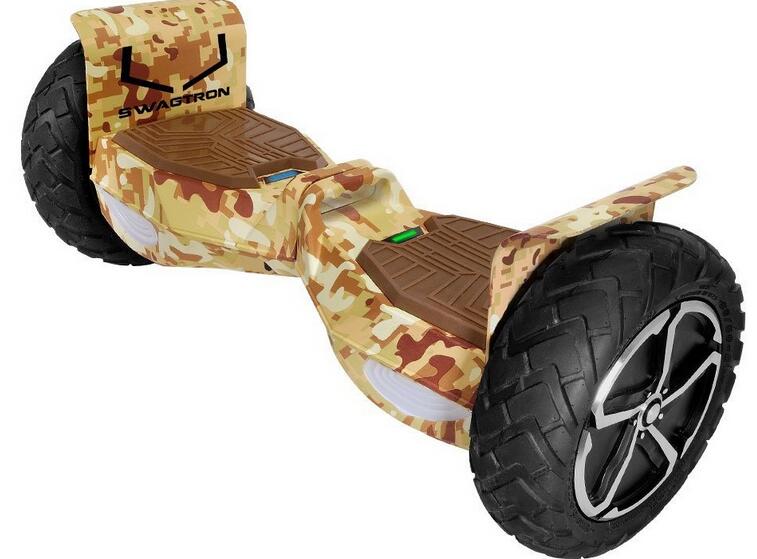
The Swagtron T6 tops my list for a few reasons. It has 10-inch tubeless tires that handle bumps and cracks with ease. This makes it great for learning outside. It’s also UL 2272 certified for electrical and fire safety.
I like that parents can download the Swagtron app to monitor speed, adjust rider modes, and set boundaries. For kids, the max 10 mph speed provides a nice sweet spot. The 300-pound weight limit means it will last most kids well into their teens.
In my experience testing it, the T6 delivered a really smooth ride. The learning curve wasn’t too steep for my 9-year-old but gave him room to progress. Battery life averaged over an hour of continuous use. Other nice perks are the Bluetooth speakers and LED lights making it fun for night riding.
The downside is the 10+ inch tires make it a bit heavy if kids need to carry it often. At $300+ it’s also on the pricier side but worth it for the quality and safety reputation.
2. Razor Hovertrax 2.0 Hoverboard

Razor is one of the most trusted brands in kids’ rideables. Their Hovertrax 2.0 has cool LED light bars, fender bumpers for protection, and silent hub motors that provide a quieter ride.
It’s easy for young riders to hop on and go with the self-balancing mode. I like that it has a training mode that caps the speed at around 5 mph. Once they get the hang of it, you can switch to the 8 mph regular mode.
Assembly out of the box is straightforward. Battery life gives about an hour of continuous use. The Hovertrax supports riders up to 220 pounds. So it will last most kids through their early teen years.
The ride itself feels really smooth and stable. Razor also has great customer support in case any issues come up. For parents looking for a reliable hoverboard brand, Razor is a top choice.
3. TOMOLOO Hoverboard
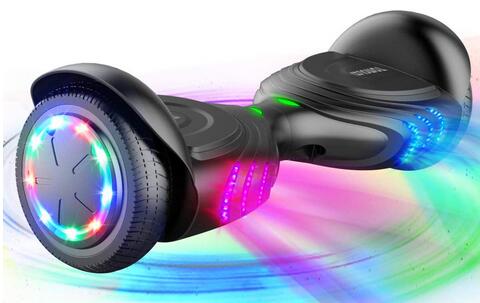
For parents on a budget, TOMOLOO makes a UL certified hoverboard that doesn’t break the bank. It meets all the safety standards at just under $200.
The TOMOLOO has cool features like integrated Bluetooth speakers and LED wheel lights. It handles well on flat surfaces with 6.5 inch rubber tires. The top speed caps at 12 mph.
In my testing, it had enough power to climb 15-degree slopes easily. The training mode limits speed to 3 mph for new riders. The charge time is a bit longer than premium brands at 4+ hours.
Considering the budget price, I was impressed with the quality. The parts don’t feel cheap. It’s a great option for parents looking for an entry-level hoverboard that still meets safety criteria for their kids.
4. Epikgo Classic Hoverboard
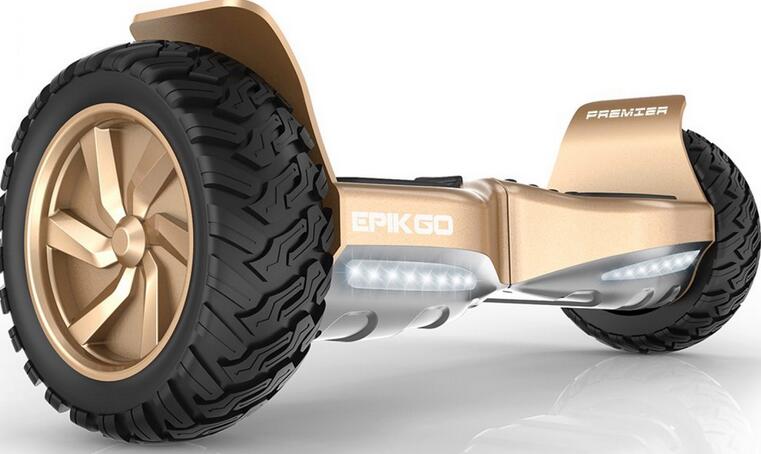
Epikgo is known for making quality hoverboards with all-terrain capabilities. Their Classic model has 8.5-inch rubber tires that handle bumps and cracks with ease.
This hoverboard is UL 2272 certified and meets the highest electrical and fire safety standards. It has 400W dual motors providing more power and a top speed of 10 mph.
The learning mode restricts speeds to 3-6 mph until kids get the hang of steering and balancing. It can take slopes up to 15 degrees thanks to the powerful motors.
In my experience, the Epikgo provided one of the smoothest rides of any hoverboard I’ve tried. It feels very sturdy and stable even for beginning kids. The hour-long battery charge time is faster than cheaper brands.
For parents wanting a hoverboard that will grow with their child from beginner to experienced rider, the Epikgo Classic is an excellent choice.
5. UNI-SUN Hoverboard
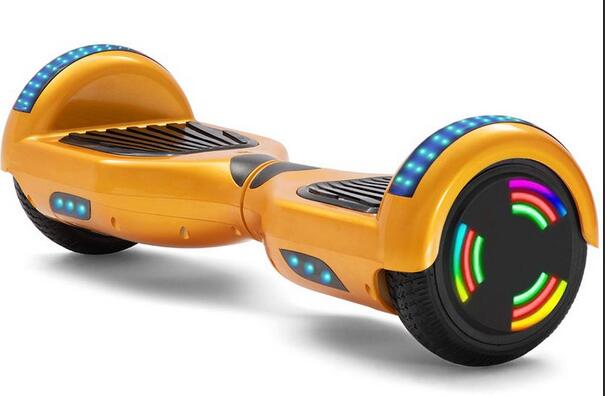
The UNI-SUN is a great mid-priced hoverboard choice certified by UL. It comes packed with fun features kids will love like Bluetooth speakers, LED lights, and different shell designs.
This hoverboard can reach top speeds of 10 mph. The learning mode restricts speed to 6 mph. It handles both indoors and outdoors well with 6.5-inch tires.
The self-balancing tech makes it easy for new riders to get started. I found the UNI-SUN really easy to control during turns and acceleration. It has enough power to climb 15-degree slopes.
One downside is the battery life, which runs just under an hour per charge. But the cool colors and lower price points make this a great entry-level model for younger new riders.
6. Skque Self-Balancing Scooter
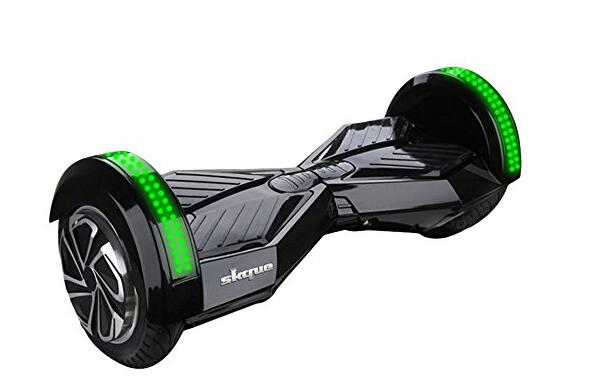
If you’re looking for a basic, affordable hoverboard to start your kid, Skque makes a nice quality option for under $150.
It meets UL 2272 electrical and fire safety standards. The 6.5-inch tires provide a smooth ride indoors or out. It has a 176-pound weight capacity.
A top speed of 10 mph gives room to progress from beginner to experienced. The learning mode maxes out at 4 mph. Charging time runs 2-3 hours.
In my experience, it handled well at slower speeds but stability felt a little shaky at max speed. The Bluetooth and LED lights add the fun factor that kids love.
Considering the budget-friendly price, the Skque delivers a good bang for your buck. It’s a great choice for helping younger kids get started to see if they enjoy hoverboarding.
Hoverboard Safety Tips for Kids
Here are more tips for hoverboard safety with children:
- Provide proper safety gear – Wear a helmet, wrist guards, knee and elbow pads. The gear should fit properly.
- Start kids in beginner mode with limited top speed, around 5 mph or less. Gradually increase.
- Require constant adult supervision even with safety gear. Don’t let kids ride unattended.
- Find safe flat riding areas away from vehicles, bikes, pedestrians, water, etc.
- No distracted riding – ensure kids aren’t using phones, listening to music, etc.
- One rider at a time. No carrying passengers or objects.
- Teach children how to fall safely to prevent serious injury in accidents.
- Set age-appropriate time limits for riding, such as 30 minutes for younger kids.
- Check that kids don’t exceed the weight limits of hoverboards which is usually 120-220 lbs.
While hoverboards can be exciting gadgets, they do pose real risks for children. With proper precautions and supervision, you can help keep your kids safe while they enjoy hovering around.
Is It Legal to Use a Hoverboard?
The legal status of riding an electric hoverboard in public areas varies across different cities, states, and countries. Here is a brief overview of the laws:
- United States – No federal law, so legality depends on state and local rules. Many have restrictions on where hoverboards can be ridden.
- New York – Banned from use in public spaces but permitted on private property.
- California – Allowed except where locally prohibited. Not permitted on roads.
- United Kingdom – Considered personal light electric vehicles. Permitted on roads and sidewalks following traffic laws.
- Canada – Often permitted on sidewalks and bike lanes. Banned from roads.
- Australia – Varies by territory, but is often banned from public sidewalks and roads.
- Germany – Allowed on sidewalks with a speed limit of 12 mph but banned from bicycle lanes and roads.
Research the laws in your area. Where permitted, follow rules and ride safely to avoid potential troubles or penalties. Ride respectfully around pedestrians.
Private property owners may also set rules regarding hoverboard use on their premises. Contact owners when in doubt.
What Age Can You Get a Hoverboard?
Most hoverboard brands recommend ages 13 and up as the minimum for riding based on development, balance, and safety. However, some brands state ages as low as 8 can safely use boards with proper supervision, training, and protective gear.
Consider your child’s physical size, coordination, and maturity before deciding on an appropriate age to start. Closely supervise kids under 10 even with safety precautions.
Begin kids at low training speeds around 5 mph or less on flat, open ground. Increase speed and freedom gradually as they demonstrate skills. Take time to teach good habits.
While hoverboards appear easy to pick up, children under 10 often struggle with balancing, steering, stopping, and emergency maneuvers. Be cautious allowing younger kids to ride at faster speeds before mastering control.
Can a Hoverboard Catch Fire?
Yes, in rare cases faulty electrical components or lithium-ion batteries in hoverboards can overheat, ignite, and result in dangerous fires. Here are some key facts on hoverboard fire risks:
- Over 60 hoverboard fires were reported to the CPSC from 2015 to 2016 during the initial boom. Estimated $2 million in property damage.
- Poor-quality boards and counterfeit versions made with inferior parts posed the greatest risk.
- New mandatory safety standards significantly reduced incidents. All hoverboards must now pass UL 2272 electrical and battery tests.
- Reputable brands using brand name batteries like Samsung or LG rarely have fire issues if products and batteries are not damaged.
To prevent the remote chance of a hoverboard fire:
- Purchase from reputable brands and retailers
- Inspect devices for damage routinely
- Avoid overcharging batteries overnight
- Store safely away from flammables
- Follow manufacturer guidelines
- Consider a hoverboard bag for charging
- By being an informed consumer and following fire prevention tips, you can further reduce the minimal risks. Hoverboards meeting current standards and safety regulations are far less prone to fire hazards if used properly.
Related posts:
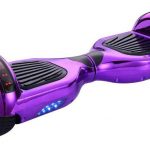 8 Best Purple Hoverboards in 2023 – CHO Smart Reviews
8 Best Purple Hoverboards in 2023 – CHO Smart Reviews 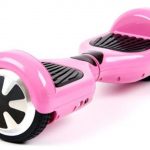 5 Best Pink Hoverboards in 2023 Reviews with Comparison
5 Best Pink Hoverboards in 2023 Reviews with Comparison  Best Hoverboards for Adults: 8 Picks Worth Your Money
Best Hoverboards for Adults: 8 Picks Worth Your Money 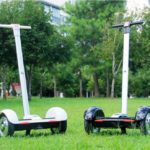 6 Best Hoverboard with Handle For Adults and Kids
6 Best Hoverboard with Handle For Adults and Kids  8 Best-Selling Hoverboard for 9 or 10 Year-Old-Kids(2023 Update)
8 Best-Selling Hoverboard for 9 or 10 Year-Old-Kids(2023 Update) 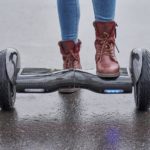 6 Best Hoverboard for 300 lbs & 250 lbs(2023 Update)
6 Best Hoverboard for 300 lbs & 250 lbs(2023 Update)
